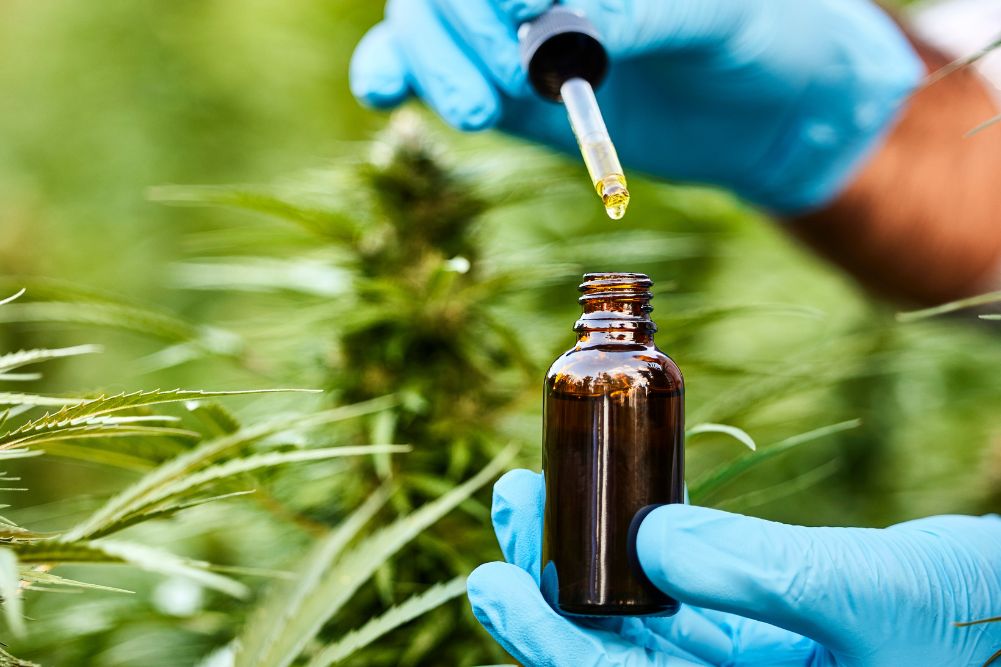Medicinal Cannabis
Mary Jane’s coming out from pot parties and into mainstream medical practice. Though cannabis has valid therapeutic benefits, it’s not Puff the magic drug. Users need to be aware of weed warnings before getting too hemp happy.
Hashish history
“We are only beginning to understand how cannabis works. The potential benefits are enormous.” Dr. Raphael Mechoulam
Marijuana has undergone more makeovers than Madonna. Today, the tide’s turned towards greater acceptance, which some welcome and others are wary of. Many form their perspective from personal experience.
My GP client swears he can walk with less pain due to his daily dose, while a psychiatrist friend says he’s seen serious disassociation and psychosis linked to cannabis. Powerful substances tend to have the potential to heal or harm. Love it or loathe it, weed is a budding business that’s flourishing faster than lantana. Let’s track the growth of this herb from an ascetic seed to a flourishing trillion-dollar cash crop.
Many Eastern cultures valued cannabis for healing, recreation and rituals. As far back as 2737 BCE, Emperor Shen Nong prized marijuana for health issues, including arthritis. Scythians in the 5th century used ceremonial cannabis smoke. Hashish was popular in the 10th century in Middle Eastern artistic circles. Sufis in the 11th-12th century valued hashish for heightened spiritual states.
Ancient ayurvedic medicine prescribed cannabis as an analgesic, anti-diarrhoeal, aphrodisiac, appetite stimulant, euphoric, expectorant and sedative. It’s included in classical preparations such as Jatiphaladi Churna for malabsorption and respiratory issues. The Atharva Veda has mixed reviews about marijuana. It’s exalted as one of the five most sacred plants but is also classified as a mild toxin that must be purified. Ayurveda warns that extensive use can cause agitation, anxiety, apathy, confusion, dehydration, delusions, overheating and more. The Sanskrit for cannabis is bhaṅgā which translates as break. In this sense it can break one’s identification with the mind/body, offering temporary respite from overreacting and overthinking.
Marijuana wafted to the west where it was taken primarily for pain. Famous users include Queen Victoria whose physician Dr John Russel Reynolds prescribed it for dysmenorrhea. The US joined the joint revolution in the 1900s – 1930s, using it for anxiety, insomnia and pain. A reefer madness campaign claiming whacky tobaccy turns smokers into sex maniacs led to its prohibition in America in 1937. However, until 1942 it was listed in the US pharmacopoeia as a treatment for many conditions including neuralgia. Sixties hippies revived the green dream as a way to tune out and turn on to transcendental experiences. Rastafarians including Bob Marley felt marijuana “reveals you to yourself.” They exalted hemp as a sacramental substance for rituals and “reasoning sessions.” Modern day Churches of Cannabis (Colorado) and Church of Ubuntu (Newcastle) hail hemp as a superior healing herb.
Legal limbo
After a long war on weed, pot propaganda is subsiding with marijuana’s medicinal merits re-emerging along with its conditional legal use in many regions. However, countries still largely prohibit the cultivation and use of hemp including Indonesia, Japan, Nigeria, Russia, Singapore, UAE and Saudi Arabia.
The US revolution came in 2018 with the Farm Bill declaring it legal to produce hemp that contains less than 0.3% tetrahydrocannabinol (THC). Hence low THC cannabis is readily available in the USA in an amazing assortment of strains and forms including edible “Girl Scout Cookies.” There are countless places in the US you can get over the counter cannabis beverages, edibles, oil, patches, suppositories, tinctures, topicals, vapes and old school bud.
In Australia and New Zealand hemp is legal for food and industrial use but restricted to prescription only for medicinal use. This may shift as 80 per cent of people felt personal use of cannabis should be decriminalised in the Australian 2022-2023 National Drug Strategy Household survey. The ACT is leading the way to change when in 2020 it declared it legal for over 18’s to have up to 50gms cannabis for personal use and to grow two hemp plants at home per person with a maximum of four plants per household if kept and used in a place not visible to the public.
The Nimbin Hemp Embassy, hempembassy.net, is campaigning for cannabis freedom in Australia. CBD containing less than 0.01 per cent THC is legal in Australia for adults up to a maximum of 150 mg/day to be supplied over-the-counter by a pharmacist without a prescription however there doesn’t appear to be any TGA approved products meeting this criteria currently, most likely due to the cost of product registration. According to ABC news, “Expert clinical groups including physicians, psychiatrists, the Australian Medical Association and Australasian Society of Clinical and Experimental Pharmacologists and Toxicologists opposed the down-scheduling, citing the lack of safety data, lack of efficacy data, issues with product labelling and the potential for interactions with prescription medicines.”
Only some doctors in Australia are approved through the TGA to prescribe cannabis via the Special Access Scheme or Authorised Prescriber Scheme. The cost of prescribed cannabis can be higher than illegally purchased cannabis because it’s a relatively new and niche treatment, not covered by Medicare or private health insurance. However, some may be eligible for clinical trials on medicinal cannabis. Search “cannabis” on the Australian/New Zealand Clinical Trial Registry to access a list of all Australian medicinal cannabis clinical trials.
Drug driving
Considering THC can affect driving skills even drivers on prescribed cannabis face penalties if THC is detected. Penalties may include demerit points, fines, license suspension and criminal charges.
Money trees
After Australia legalised the use of prescribed medical marijuana in 2016 the hemp harvest is estimated to earn 1 billion by 2025. Australians purchased a whopping $400 million on medicinal cannabis in the first half of 2024 according to a report by the Pennington Institute. According to the National Drug Strategy Household Survey 2022–2023 (NDSHS), “In 2022–2023, 3.0 per cent of people in Australia had used cannabis for medical purposes in the previous 12 months, equating to around 700,000 people.” The study revealed 49 per cent of users suffered anxiety, 43 per cent chronic pain, and 6.2 per cent cancer. This has branched into a massive telehealth industry which often only prescribes their affiliated brand of medicinal cannabis reaping massive profits with some questioning the level of client care. This was investigated in a special report by ABC news, “Medicinal cannabis sales are booming but unethical prescribing is putting Australians at risk.”
The ABCs of CBD and THC
Cannabis contains over 500 constituents of which only the delta-9-tetrahydrocannabinol (THC) compound is mind altering. They key healing constituents in cannabis are cannabidiol (CBD) and THC.
This dynamic duo differ in the following ways – CBD doesn’t make you stoned whereas THC’s psychoactive effect can make you high as it interacts with the CB1 receptors in the endocannabinoid system. THC is analgesic, anti-nausea, stimulates appetite and assists non-Rem sleep.
CBD is a potent anti-inflammatory, anti-anxiety, anticonvulsant, antioxidant and neuroprotective.
The only cannabis strains approved for prescribing in Australia are sativa and indica. Cannabis indica has higher levels of CBD than THC. It is used more for its sedative effects in insomnia and anxiety. Cannabis sativa has higher levels of CBD and THC than indica. It is used for all conditions. Hybrid blends of indica and sativa are commonly created for the desired ratio of CBD:THC.
There’s a varied landscape of cannabis strains and products prescribed in Australia tailored to patient’s needs. Cannabis is available as capsules, chewables, creams, crystals, flower, lozenges, oil, oro-mucosal sprays and tinctures.
Formulations have varying ratios of CBD to THC. High CBD, Low THC are commonly used for conditions like anxiety, epilepsy and chronic pain. Balanced CBD:THC is often used for cancer-related symptoms and pain. High THC, Low CBD may be prescribed for low appetite, intense pain and nausea. One of the largest producers is Tilray who provide a 1:1 CBD:THC strain and an 18:1 CBD:THC strain. Popular products include high CBD ACDC, Avidekel and Charlotte’s Web. Cannatonic and Harlequin are both balanced CBD:THC blends.
High Hopes
“The evidence is overwhelming that marijuana can relieve certain types of pain, nausea, vomiting and other symptoms caused by such illnesses as multiple sclerosis, cancer and AIDS.” – Former US Surgeon General, Dr. Joycelyn Elders
Everyone responds differently to cannabis according to many factors including their internal endocannabinoid system. Medicinal cannabis is a gamechanger for some while others find it has a detrimental or insignificant effect. At this stage in Australia the TGA has approved the use of medicinal cannabis as a valid therapy in some cases of the following conditions:
- Anxiety and PTSD
- Chronic pain, particularly pain related to arthritis, cancer, multiple sclerosis and neuralgia.
- Cancer treatment related symptoms such as anorexia, nausea and vomiting from chemotherapy or radiotherapy.
- Epilepsy, particularly treatment-resistant types.
- Inflammatory conditions such as Crohn’s disease.
- Multiple sclerosis to treat muscle spasticity and pain.
- Neurodegenerative conditions such as Huntington’s Disease and Parkinson’s Disease.
Stigma to science
Separating weed facts from fallacies requires more stringent scientific support. The latest studies on medicinal cannabis have very encouraging conclusions in supporting cannabis use for anxiety, chronic pain, cognitive decline in Alzheimer’s, epileptic seizures in children, depression, nausea with cancer treatment and inflammatory bowel disease. Accounts of beneficial effects abound in reliable research.
The good green
A pioneering product showing great promise is liposomal CBD. Studies showed it absorbs into the blood stream much faster and in higher levers than non-liposomal CBD. Smoking cannabis exposes one to potentially carcinogenic tar and increases carbon monoxide and gases that reduce circulating oxygen. Vaping may expose one to harmful vitamin E acetate and heavy metals.
According to the US Food and Drug Administration and a 2021 study conducted by Alexander Larcombe, a respiratory physiologist at Curtin University, vapes also contain harmful chemicals and flavourings that are carcinogenic. Evidence indicates e-cigarettes can increase the incidence of airway injury, asthma, bronchitis, cough, high blood pressure, impaired immunity and lung cancer.
Coming down
Marijuana is more than a harmless hippy herb. Though generally safe in low doses over short durations it can have serious side effects. One of my clients claimed, “dope made me dumb.” Documented downers may include addiction, amotivational syndrome, anxiety, cognitive impairment, depression, disassociation, impaired motor skills, raised heart rate, reduced fertility, respiratory issues, psychosis and severe vomiting. Approximately 9 per cent of cannabis users will develop a dependency according to research published in JAMA Psychiatry. Cannabis should be avoided during breastfeeding, driving, operating machinery, pregnancy and while on incompatible medications. As with any medicinal substance cannabis should be tailored to the individual and their condition and prescribed by a qualified healthcare profession.
Holy smoke
Indian mythology recounts Lord Shiva, taking a toke on the peace train when his infamous anger flared thousands of years ago. Granted Shiva was also able process poisons like mercury without effects and he didn’t stay stoned like some diehard devotees do. He was generally high on the divine without the need for substances.
Most modern yoga teachers don’t advise regular use of cannabis as it can clog the mental channels increasing tamas or ignorance. As spiritual master Srila Prabhupada taught, with pure yoga you can “Stay high forever. No more coming down!” Sadguru encourages a natural high, “If you look into my eyes, you will see I am always stoned, without taking any substance. Everything that you want to experience is already in your system.”
Donny Daison shared their experience on YouTube, “I’ve had a lot of deep and expansive experiences in meditation with marijuana, but I found eventually it only took me so far, and once I learned what I needed to learn from this plant, I could go much further without it. Now I have it only about twice a year when I feel divinely inspired and the moment is right.”
The author does not endorse or advocate the use of cannabis. The information provided in this article is for educational purposes only. Please consult a qualified healthcare professional before making any decisions regarding cannabis use.








